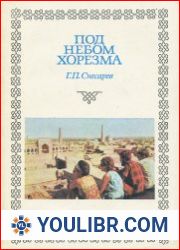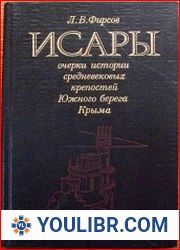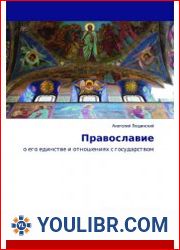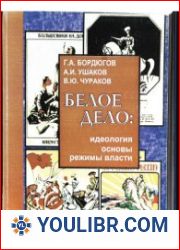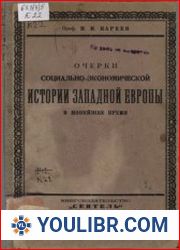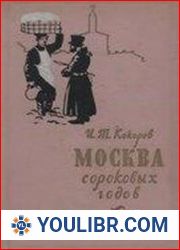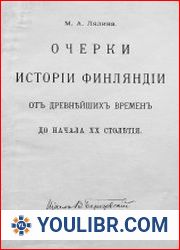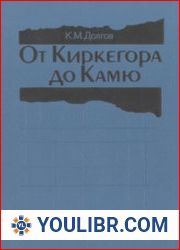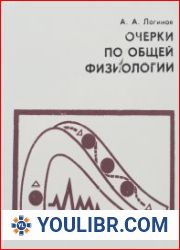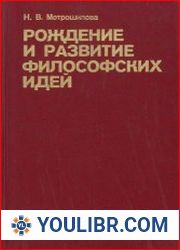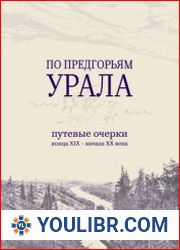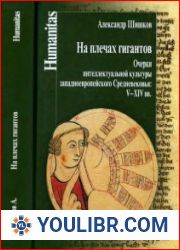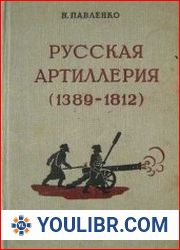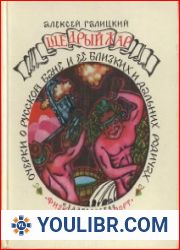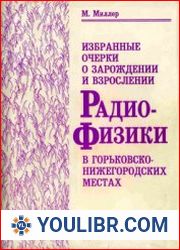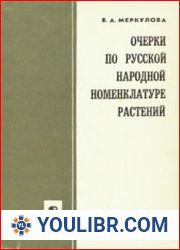
BOOKS - HISTORY - Под небом Хорезма (Этнографические очерки)...

Под небом Хорезма (Этнографические очерки)
Author: Снесарев Г.П.
Year: 1973
Format: PDF
File size: 11 MB
Language: RU
Year: 1973
Format: PDF
File size: 11 MB
Language: RU
Where the Amu Darya flows into the Aral Sea, in the Khorezm oasis surrounded by deserts, the life of people, animals and plants depended entirely on artificial irrigation. Until relatively recently, sacrifices were made to the fertile waters of the river, along the mountain paths of the Sultanuizdag ridge, singing hymns, dervishes - wandering mystics, "servants of the dead" passed through the narrow streets of Khiva, who were forbidden by custom to communicate with others... So it was once in the life of a sultry land. In the transformed Khorezm of our days, only single fragments remained from past customs and rites. The reader learns about all this from the book of the Soviet ethnographer.
G. Buga. The plot of the book "Под небом Хорезма Этнографические очерки" (Under the Sky of Khorezm Ethnographic Essays) by A. G. Buga is a captivating tale that delves into the lives of people, animals, and plants in the Khorezm region of Uzbekistan, where the Amu Darya River flows into the Aral Sea. The story begins with the description of the ancient irrigation system that sustained life in the arid desert landscape, where the people made sacrifices to the fertile waters of the river along the mountain paths of the Sultanuizdag ridge. The author vividly portrays the singing hymns, dervishes, and mystics who wandered through the narrow streets of Khiva, their customs and rituals that were once an integral part of the sultry land. As the reader progresses through the book, they discover that only remnants of these customs and rites remain in the transformed Khorezm of modern times. The author masterfully weaves together historical accounts, folklore, and personal experiences to paint a rich tapestry of life in this enigmatic region. Through his ethnographic essays, Buga invites the reader to embark on a journey to understand the evolution of technology, the need for a personal paradigm to perceive the technological process of developing modern knowledge, and the possibility of unifying people in a warring state. G. Buga. حبكة كتاب «تحت سماء خوارزم مقالات إثنوغرافية» (تحت سماء خوارزم مقالات إثنوغرافية) بقلم أ. ج. بوجا هي قصة ساحرة تتعمق في حياة الناس والحيوانات والمصانع في منطقة خوارزم في أوزبكستان، حيث أمو دارز في بحر آرال. تبدأ القصة بوصف لنظام الري القديم الذي دعم الحياة في المناظر الطبيعية الصحراوية القاحلة، حيث قدم الناس تضحيات لمياه النهر الخصبة على طول الممرات الجبلية لتلال السلطانة. يصور المؤلف بوضوح الترانيم الغنائية والدراويش والصوفيين الذين يتجولون في شوارع خيفا الضيقة وعاداتهم وطقوسهم، والتي كانت ذات يوم جزءًا لا يتجزأ من الأرض المثيرة. بينما ينتقل القارئ عبر الكتاب، يكتشفون أنه في خوارزم المتغيرة في العصر الحديث، لم يتبق سوى بقايا هذه العادات والطقوس. ينسج المؤلف ببراعة القصص التاريخية والفولكلور والتجارب الشخصية لرسم نسيج غني للحياة في هذه المنطقة الغامضة. من خلال مقالاته الإثنوغرافية، يدعو بوغا القارئ للذهاب في رحلة لفهم تطور التكنولوجيا، والحاجة إلى نموذج شخصي للإدراك للعملية التكنولوجية لتطوير المعرفة الحديثة، وإمكانية توحيد الناس في حالة حرب. G. Booga. A história de «Sob o céu do Coreograma Relatos Etnográficos» (Sob o Céu dos Ensaios Etnográficos de Korosma), de A. G. Bugoy, é uma história encantadora que contém as vidas de pessoas, animais e fábricas na região de Korozma, onde o Rio Amudarya corre no Mar de Aral. A história começa com a descrição de um antigo sistema de irrigação que mantinha a vida em uma paisagem desértica árida, onde o povo oferecia sacrifícios às águas férteis do rio pelos trilhos da montanha da cordilheira Sultanuizdag. O autor retrata claramente os hinos cantores, os dervis, os místicos que percorriam as ruas estreitas de Khiva, os seus costumes e os seus ritos, uma vez parte integrante da terra feroz. À medida que o leitor avança sobre o livro, eles descobrem que o novo tempo é transformado no Coreismo, apenas resquício desses costumes e ritos. O autor fala muito bem sobre histórias históricas, folclore, experiências pessoais para desenhar a rica tapeçaria da vida nesta região misteriosa. Através de seus ensaios etnográficos, Buga sugere que o leitor viaje para compreender a evolução da tecnologia, a necessidade de um paradigma pessoal de percepção do processo tecnológico de desenvolvimento do conhecimento moderno, e a possibilidade de unir as pessoas num estado em guerra. G. 부가. A. G. Buga의 "Khorezm Ethnographic Essays의 하늘 아래" (Khorezm Ethnographic Essays의 하늘 아래) 책의 음모는 Amu Darya 강이 Aral Sea로 흘러 들어가는 우즈베키스탄의 Khorezm 지역에있는 사람, 동물 및 공장의 삶. 이 이야기는 사람들이 Sultanuizdag 능선의 산길을 따라 강의 비옥 한 물을 희생하는 건조한 사막 풍경에서의 삶을 지원하는 고대 관개 시스템에 대한 설명으로 시작됩니다. 저자는 찬송가, 탁월함, 키바의 좁은 거리를 돌아 다니는 신비로운 사람들, 그들의 관습과 의식을 생생하게 묘사합니다. 독자들이이 책을 읽을 때, 그들은 현대의 변형 된 코 레즈 (Khorezm) 에서 이러한 관습과 의식의 잔재 만 남아 있음을 발견했습니다. 저자는이 신비한 지역에서 풍부한 삶의 태피스트리를 그리기 위해 역사적 이야기, 민속, 개인적인 경험을 완벽하게 짜냅니다. Buga는 민족지 학적 에세이를 통해 독자들에게 기술의 진화, 현대 지식 개발의 기술 과정에 대한 개인적인 인식의 필요성, 전쟁 상태에서 사람들을 연합시킬 수있는 가능성을 이해하기위한 여정을 시작하도록 초대합니다. ג 'י בוגה. עלילת הספר Under the Sky of Khorezm Ethnographic Essays (תחת שמיים של כתרים אתנוגרפיים) מאת א. ג '. בוגה היא סיפור מקסים המתעמק בחייהם של אנשים, בעלי חיים ומפעלים באזור ח'וראזם שבאוזבקיסטן, היכן שאמו דריה הנהר זורם לים אראל. הסיפור מתחיל בתיאור של מערכת השקיה עתיקה שתמכה בחיים בנוף מדברי צחיח, שבו העם הקריב קורבנות למים הפוריים של הנהר לאורך השבילים ההרריים של רכס הסולטנואיזדאג. המחבר מתאר בצורה חיה מזמורים, דרווישים, מיסטיקנים המשוטטים ברחובות הצרים של ח 'יווה, מנהגיהם וטקסיהם, שהיו בעבר חלק בלתי נפרד מהארץ המלוכלכת. ככל שהקורא עובר דרך הספר, הם מגלים כי ב Khorezm השינוי של ימינו, רק שרידי המנהגים והטקסים האלה נשארים. המחבר שוזר במומחיות סיפורים היסטוריים, פולקלור, חוויות אישיות כדי לצייר מארג עשיר של חיים באזור מסתורי זה. באמצעות מאמריו האתנוגרפיים, מזמין בוגה את הקורא לצאת למסע להבנת התפתחות הטכנולוגיה, הצורך בפרדיגמה אישית של תפיסה של התהליך הטכנולוגי של התפתחות הידע המודרני, האפשרות לאחד אנשים במצב לוחמני. G. Buga. Die Handlung des Buches „Unter dem Himmel von Khorezm Ethnographische Essays“ (Unter dem Himmel von Khorezm Ethnographische Essays) von A. G. Bugoy ist eine charmante Geschichte, die sich im ben von Menschen, Tieren und Fabriken in der Region Khorezm von Usbekistan, wo der Fluss Amudarya in den Aralsee fließt, vertieft. Die Geschichte beginnt mit der Beschreibung eines alten Bewässerungssystems, das das ben in einer trockenen Wüstenlandschaft aufrechterhielt, in der die Menschen dem fruchtbaren Wasser des Flusses entlang der Bergpfade des Sultanuizdag-Rückens Opfer brachten. Der Autor zeigt lebhaft Gesangshymnen, Derwische, Mystiker, die durch die engen Gassen von Chiwa streiften, ihre Bräuche und Riten, die einst ein integraler Bestandteil des schwülen Landes waren. Während sich der ser durch das Buch bewegt, stellen sie fest, dass im verklärten Choresm der Neuzeit nur noch Reste dieser Bräuche und Riten verbleiben. Der Autor verwebt meisterhaft historische Geschichten, Folklore, persönliche Erfahrungen, um einen reichen Wandteppich des bens in dieser mysteriösen Region zu zeichnen. Durch seine ethnographischen Essays schlägt Buga dem ser vor, sich auf eine Reise zu begeben, um die Entwicklung der Technologie zu verstehen, die Notwendigkeit eines persönlichen Paradigmas für die Wahrnehmung des technologischen Prozesses der Entwicklung des modernen Wissens, die Möglichkeit, Menschen in einem kriegsführenden Staat zu vereinen. G。ブガ。A。 G。 Bugaによる本「ホレズム民族エッセイの空の下で」(ホレズム民族エッセイの空の下で)のプロットは、ウズベキスタンのホレズム地方の人々、動物、工場の生活を掘り下げる魅力的な物語ですアラル海に流れ込む。物語は、人々がスルタヌイズダグ尾根の山道に沿って川の肥沃な水に犠牲を払った乾燥した砂漠の風景の中での生活を支えた古代の灌漑システムの説明から始まります。作者は、ヒヴァの狭い通りをさまよっている歌の賛美歌、神秘主義者、彼らの習慣や儀式を鮮やかに描写しています。読者が本の中を移動すると、彼らは現代の変容したホレズムでは、これらの習慣と儀式の残骸だけが残っていることを発見します。著者は、この神秘的な地域での豊かな生活のタペストリーを描くために、歴史的な物語、民間伝承、個人的な経験を巧みに織り交ぜています。エスノグラフィックエッセイを通して、ブガは読者に技術の進化、近代的知識の発展の技術プロセスの知覚の個人的なパラダイムの必要性、戦争状態で人々を団結させる可能性を理解する旅に行くように招待します。 G. Buga. A. G. Buga'nın "Khorezm'in Göğü Altında Etnografik Denemeler" (Under the Sky of Khorezm Ethnographic Essays) kitabının konusu, Amu Darya nehrinin Aral Denizi'ne aktığı Özbekistan'ın Khorezm bölgesindeki insanların, hayvanların ve fabrikaların yaşamlarını inceleyen büyüleyici bir hikaye. Hikaye, insanların Sultanuizdağ sırtının dağ yolları boyunca nehrin verimli sularına fedakarlık yaptıkları kurak bir çöl manzarasında yaşamı destekleyen eski bir sulama sisteminin bir açıklaması ile başlar. Yazar, şarkı söyleyen ilahileri, dervişleri, Hiva'nın dar sokaklarında dolaşan mistikleri, bir zamanlar boğucu toprakların ayrılmaz bir parçası olan gelenek ve ritüellerini canlı bir şekilde tasvir ediyor. Okuyucu kitapta ilerledikçe, modern zamanların dönüştürülmüş Khorezm'inde sadece bu gelenek ve ritüellerin kalıntılarının kaldığını keşfederler. Yazar, bu gizemli bölgedeki yaşamın zengin bir duvar halısını boyamak için tarihi hikayeleri, folkloru, kişisel deneyimleri ustalıkla bir araya getiriyor. Buga, etnografik denemeleri aracılığıyla okuyucuyu, teknolojinin evrimini, modern bilginin gelişiminin teknolojik sürecinin algılanması için kişisel bir paradigma ihtiyacını, insanları savaşan bir durumda birleştirme olasılığını anlamak için bir yolculuğa çıkmaya davet ediyor. G. Buga. La trama del libro «Bajo el cielo de Horesma Ensayos etnográficos» (Bajo el cielo de los ensayos etnográficos de Khorezm) de A. G. Buga es un relato encantador que explora en vidas de personas, animales y fábricas en la región de Khorezm de Uzbekistán, donde el río Amudaria fluye hacia Aral el mar. La historia comienza con la descripción de un antiguo sistema de riego que mantenía la vida en un árido paisaje desértico, donde el pueblo hacía sacrificios a las fértiles aguas del río a través de los senderos montos de la cordillera Sultanuizdag. autor retrata vívidamente los himnos cantores, los derviches, los místicos que deambulaban por las estrechas calles de Hiva, sus costumbres y ritos, que antaño eran parte integral de la tierra soplada. A medida que el lector avanza en el libro, descubren que sólo quedan restos de estas costumbres y ritos en el transformado Horesma de los tiempos modernos. autor teje magistralmente relatos históricos, folclore, experiencias personales para dibujar el rico tapiz de la vida en esta misteriosa región. A través de sus ensayos etnográficos, Buga invita al lector a emprender un viaje para comprender la evolución de la tecnología, la necesidad de un paradigma personal para percibir el proceso tecnológico del desarrollo del conocimiento moderno, la posibilidad de unir a las personas en un estado en guerra. G. Buga. La trama del libro «Sotto il cielo del coreografo I racconti etnografici» (Sotto il Cielo dei Saggi Etnografici di Coreosma) di A. G. Bugoi è un racconto affascinante che si affaccia sulle vite di uomini, animali e fabbriche nella regione di Korosma, dove il fiume Amudarya scorre nel Mare d'Aral. La storia inizia con la descrizione di un antico sistema di irrigazione che ha mantenuto la vita in un paesaggio arido e desertico, dove il popolo ha sacrificato le acque fertili del fiume lungo i sentieri montani della cresta Sultanuizdag. L'autore raffigura gli inni cantanti, i dervischi, i mistici che vagavano per le strade strette di Hiva, le loro abitudini e riti, una volta parte integrante della terra frizzante. Man mano che il lettore si muove attraverso il libro, essi scoprono che nell'Orario Trasformato del Nuovo Tempo rimangono solo i resti di queste abitudini e riti. L'autore parla magistralmente di storie storiche, folklore, esperienze personali per disegnare un ricco tappeto di vita in questa misteriosa regione. Attraverso i suoi disegni etnografici, Buga invita il lettore a intraprendere un viaggio per comprendere l'evoluzione della tecnologia, la necessità di un paradigma personale della percezione del processo tecnologico di sviluppo della conoscenza moderna, la possibilità di unire le persone in uno stato in guerra. G. Buga. L'histoire du livre « Sous le ciel de Horezma Etudes ethnographiques », A. G. Buga, est une histoire charmante qui fouille dans la vie des hommes, des animaux et des usines dans la région de Khorezma en Ouzbékistan, où la rivière Amdarya coule dans la mer d'Aral. L'histoire commence par une description de l'ancien système d'irrigation qui a maintenu la vie dans un paysage désertique aride, où le peuple a sacrifié les eaux fertiles du fleuve le long des sentiers de montagne de la crête du Sultanuizdag. L'auteur représente brillamment les hymnes chantés, les derviches, les mystiques qui errent dans les ruelles étroites de Hiva, leurs coutumes et leurs rites, autrefois partie intégrante de la terre fertile. Au fur et à mesure que le lecteur avance sur le livre, ils découvrent que dans le Horesma transformé des temps modernes, il ne reste que les restes de ces coutumes et rites. L'auteur fait des histoires historiques, du folklore, des expériences personnelles pour dessiner la riche tapisserie de la vie dans cette région mystérieuse. À travers ses études ethnographiques, Booga invite le lecteur à voyager pour comprendre l'évolution de la technologie, la nécessité d'un paradigme personnel pour percevoir le processus technologique du développement de la connaissance moderne, la possibilité de rassembler les gens dans un État en guerre. G. Buga. Fabuła książki „Under the Sky of Khorezm Ethnographic Essays” (Pod niebem Khorezm Etnograficznych esejów) A. G. Buga to urocza historia, która zagłębia się w życie ludzi, zwierząt i fabryk w regionie Chorezm Uzbekistan, gdzie rzeka Amu Darya wpływa do Morza Aralskiego. Historia zaczyna się od opisu starożytnego systemu nawadniania, który wspierał życie w suchym krajobrazie pustyni, gdzie ludzie składali ofiary do żyznych wód rzeki wzdłuż górskich ścieżek grzbietu Sultanuizdag. Autor żywo przedstawia śpiewające hymny, dervishes, mistyki wędrujące po wąskich ulicach Khiva, ich zwyczaje i rytuały, które były niegdyś integralną częścią sultry ziemi. Kiedy czytelnik przechodzi przez książkę, odkrywają, że w przekształconym Chorezmie współczesności pozostają jedynie pozostałości tych zwyczajów i rytuałów. Autor mistrzowsko tkwi razem historyczne historie, folklor, osobiste doświadczenia malować bogaty gobelin życia w tym tajemniczym regionie. Poprzez swoje etnograficzne eseje, Buga zachęca czytelnika, aby wyruszył w podróż, aby zrozumieć ewolucję technologii, potrzebę osobistego paradygmatu postrzegania technologicznego procesu rozwoju nowoczesnej wiedzy, możliwość zjednoczenia ludzi w walczącym państwie. Г. Буга. Сюжет книги «Под небом Хорезма Этнографические очерки» (Под Небом Хорезмских Этнографических Эссе) А. Г. Бугой является очаровательным рассказом, который копается в жизнях людей, животных и заводов в Хорезмской области Узбекистана, куда река Амударья течет в Аральское море. История начинается с описания древней оросительной системы, которая поддерживала жизнь в засушливом пустынном ландшафте, где народ приносил жертвы плодородным водам реки по горным тропам хребта Султануиздаг. Автор ярко изображает певческих гимнов, дервишей, мистиков, бродивших по узким улочкам Хивы, их обычаи и обряды, бывшие когда-то неотъемлемой частью знойной земли. По мере продвижения читателя по книге они обнаруживают, что в преображённом Хорезме нового времени остаются лишь остатки этих обычаев и обрядов. Автор мастерски сплетает воедино исторические рассказы, фольклор, личные переживания, чтобы нарисовать богатый гобелен жизни в этом загадочном регионе. Через свои этнографические очерки Буга предлагает читателю отправиться в путешествие, чтобы понять эволюцию технологий, необходимость личностной парадигмы восприятия технологического процесса развития современного знания, возможность объединения людей в воюющем государстве. G. Buga。A. G. Bugoi撰寫的《在Horizm的天空下的人種學論文》(在Horizm的天空下)的情節是一個迷人的故事,挖掘了烏茲別克斯坦Khorizm地區的人類,動物和工廠的生活,Amudarya河流入鹹海。故事始於對古老的灌溉系統的描述,該灌溉系統在幹旱的沙漠景觀中維持生命,人們在蘇丹國山脈的山脈步道上犧牲了肥沃的河水。作者生動地描繪了歌唱贊美詩,dervishes,在希瓦(Hiva)狹窄的詭計中漫遊的神秘主義者,他們的習俗和儀式,這些習俗和儀式曾經是悶熱土地不可或缺的一部分。隨著讀者沿著這本書前進,他們發現只有這些習俗和儀式的殘余物留在了現代的Khorezm變形中。作者巧妙地編織了歷史故事,民間傳說,個人經歷,以描繪這個神秘地區的豐富生活掛毯。通過他的民族誌論文,Buga邀請讀者踏上了解技術演變的旅程,理解現代知識發展的技術過程的個人範式的必要性,以及將人們聚集在交戰狀態的可能性。
pdf dosyasını indir Horezm'in Göğü Altında (Etnografik Denemeler) download pdf file PDFファイルをダウンロード ホレズムの空の下(民族誌エッセイ) להוריד קובץ PDF תחת השמיים של Khorezm (חיבורים אתנוגרפיים) download pdf file Под небом Хорезма (Этнографические очерки) تنزيل ملف pdf تحت سماء خوارزم (مقالات إثنوغرافية) descarregar ficheiro pdf Sob o céu de Coreografia (Relatos etnográficos) 下载 pdf 文件 在Horizom的天空下(人種學論文)
PDF-Datei herunterladen Unter dem Himmel von Choresm (Ethnographische Essays) télécharger le fichier pdf Sous le ciel de Khorezma (Essais ethnographiques) скачать файл PDF Под небом Хорезма (Этнографические очерки) descargar archivo pdf Bajo el cielo de Horesma (Ensayos etnográficos) pdf 파일 다운로드 pobierz plik pdf Pod niebem Chorezmu (eseje etnograficzne) Scarica il file pdf Sotto il cielo Coreografia (Racconti etnografici)
Там, где Амударья впадает в Аральское море, в Хорезмском оазисе, окруженном пустынями, жизнь людей, животных и растений полностью зависела от искусственного орошения. Еще сравнительно недавно благодатным водам реки приносили жертвы, по горным тропам хребта Султануиздаг брели, распевая гимны, дервиши — бродячие мистики, по узким улочкам Хивы проходили служители мертвых, которым обычай запрещал общение с окружающими. Так было когда-то в жизни знойного края. В преображенном Хорезме наших дней от прошлых обычаев и обрядов остались лишь единичные фрагменты. Обо всем этом читатель узнает из книги советского этнографа.
Là où Amdarya se jette dans la mer d'Aral, dans l'oasis de Khorezm, entourée de déserts, la vie des hommes, des animaux et des plantes dépendait entièrement de l'irrigation artificielle. Jusqu'à récemment, les eaux gracieuses du fleuve ont fait des sacrifices, sur les sentiers montagneux de la crête du Sultanuizdag, chantant des hymnes, des derviches, des mystiques errants, des « serviteurs des morts », à qui la coutume interdisait de communiquer avec les autres... C'était une fois dans la vie d'un bord assourdissant. Dans le Khorezma transformé de nos jours, il ne restait que des fragments isolés des coutumes et des rites passés. C'est ce que le lecteur apprendra dans le livre d'un ethnographe soviétique.
Dove Amudarya si affaccia nel mare di Aral, nell'oasi di Korosma circondata da deserti, la vita di uomini, animali e piante dipendeva interamente dall'irrigazione artificiale. Fino a poco tempo fa, le acque benevole del fiume hanno fatto sacrifici, lungo i sentieri di montagna del Sultanuizdag Crest, battendo inni, dervischi - mistici randagi, attraverso le strade strette di Hiva passavano «servitori dei morti», a cui la consuetudine proibiva di parlare con gli altri... È quello che è successo una volta nella vita del borgo frizzante. Nel Corisma trasformato dei nostri giorni, le abitudini e i riti passati sono rimasti solo frammenti isolati. Il lettore scoprirà tutto dal libro dell'etnografo sovietico.
Wo der Amu Darya in den Aralsee mündet, in der von Wüsten umgebenen Choresm-Oase, hing das Leben von Menschen, Tieren und Pflanzen ganz von künstlicher Bewässerung ab. Noch vor relativ kurzer Zeit wurden den fruchtbaren Gewässern des Flusses Opfer gebracht, auf den Bergpfaden des Sultanuizdag-Gebirges wurde rasiert, Hymnen gesungen, Derwische sind wandernde Mystiker, „Totendiener“ gingen durch die engen Gassen von Chiwa, denen der Brauch die Kommunikation mit anderen verbot... So war es einmal im Leben eines schwülen Landes. Im verklärten Choresm unserer Tage sind von den vergangenen Bräuchen und Riten nur einzelne Fragmente geblieben. All dies erfährt der Leser aus dem Buch eines sowjetischen Ethnographen.
Donde Amudaria desemboca en el mar de Aral, en el oasis de Khorezm, rodeado de desiertos, la vida de personas, animales y plantas dependía totalmente del riego artificial. Hasta hace relativamente poco, las aguas fértiles del río hacían sacrificios, por los senderos montañosos de la cordillera Sultanuizdag afeitaban, cantaban himnos, derviches - místicos errantes, por las estrechas calles de Hiva pasaban los «ministros de los muertos», a quienes la costumbre prohibía comunicarse con los demás... Así fue una vez en la vida del borde de las tinieblas. En la transformada Horesma de nuestros días, sólo quedan fragmentos aislados de costumbres y ritos pasados. El lector aprenderá de todo esto del libro del etnógrafo soviético.
Onde Amudarya deságua no Mar de Aral, no Oásis de Korosm, rodeado por desertos, a vida de pessoas, animais e plantas dependia completamente da irrigação artificial. Ainda há pouco tempo, as águas benéficas do rio faziam sacrifícios, os caminhos da montanha de Sultanuizdag eram abanados, os hinos cantados, os dervis - místicos vagabundos, e as ruas estreitas de Khiva passavam por «ministros dos mortos», a quem o costume proibia a comunicação com os outros... Foi o que aconteceu na vida da borda. Na transformada Coreografia de nossos dias, os costumes e ritos passados ficaram apenas fragmentos isolados. O leitor vai descobrir tudo no livro do etnógrafo soviético.
Where the Amu Darya flows into the Aral Sea, in the Khorezm oasis surrounded by deserts, the life of people, animals and plants depended entirely on artificial irrigation. Until relatively recently, sacrifices were made to the fertile waters of the river, along the mountain paths of the Sultanuizdag ridge, singing hymns, dervishes - wandering mystics, "servants of the dead" passed through the narrow streets of Khiva, who were forbidden by custom to communicate with others... So it was once in the life of a sultry land. In the transformed Khorezm of our days, only single fragments remained from past customs and rites. The reader learns about all this from the book of the Soviet ethnographer.
Там, где Амударья впадает в Аральское море, в Хорезмском оазисе, окруженном пустынями, жизнь людей, животных и растений полностью зависела от искусственного орошения. Еще сравнительно недавно благодатным водам реки приносили жертвы, по горным тропам хребта Султануиздаг брели, распевая гимны, дервиши — бродячие мистики, по узким улочкам Хивы проходили служители мертвых, которым обычай запрещал общение с окружающими. Так было когда-то в жизни знойного края. В преображенном Хорезме наших дней от прошлых обычаев и обрядов остались лишь единичные фрагменты. Обо всем этом читатель узнает из книги советского этнографа.
Là où Amdarya se jette dans la mer d'Aral, dans l'oasis de Khorezm, entourée de déserts, la vie des hommes, des animaux et des plantes dépendait entièrement de l'irrigation artificielle. Jusqu'à récemment, les eaux gracieuses du fleuve ont fait des sacrifices, sur les sentiers montagneux de la crête du Sultanuizdag, chantant des hymnes, des derviches, des mystiques errants, des « serviteurs des morts », à qui la coutume interdisait de communiquer avec les autres... C'était une fois dans la vie d'un bord assourdissant. Dans le Khorezma transformé de nos jours, il ne restait que des fragments isolés des coutumes et des rites passés. C'est ce que le lecteur apprendra dans le livre d'un ethnographe soviétique.
Dove Amudarya si affaccia nel mare di Aral, nell'oasi di Korosma circondata da deserti, la vita di uomini, animali e piante dipendeva interamente dall'irrigazione artificiale. Fino a poco tempo fa, le acque benevole del fiume hanno fatto sacrifici, lungo i sentieri di montagna del Sultanuizdag Crest, battendo inni, dervischi - mistici randagi, attraverso le strade strette di Hiva passavano «servitori dei morti», a cui la consuetudine proibiva di parlare con gli altri... È quello che è successo una volta nella vita del borgo frizzante. Nel Corisma trasformato dei nostri giorni, le abitudini e i riti passati sono rimasti solo frammenti isolati. Il lettore scoprirà tutto dal libro dell'etnografo sovietico.
Wo der Amu Darya in den Aralsee mündet, in der von Wüsten umgebenen Choresm-Oase, hing das Leben von Menschen, Tieren und Pflanzen ganz von künstlicher Bewässerung ab. Noch vor relativ kurzer Zeit wurden den fruchtbaren Gewässern des Flusses Opfer gebracht, auf den Bergpfaden des Sultanuizdag-Gebirges wurde rasiert, Hymnen gesungen, Derwische sind wandernde Mystiker, „Totendiener“ gingen durch die engen Gassen von Chiwa, denen der Brauch die Kommunikation mit anderen verbot... So war es einmal im Leben eines schwülen Landes. Im verklärten Choresm unserer Tage sind von den vergangenen Bräuchen und Riten nur einzelne Fragmente geblieben. All dies erfährt der Leser aus dem Buch eines sowjetischen Ethnographen.
Donde Amudaria desemboca en el mar de Aral, en el oasis de Khorezm, rodeado de desiertos, la vida de personas, animales y plantas dependía totalmente del riego artificial. Hasta hace relativamente poco, las aguas fértiles del río hacían sacrificios, por los senderos montañosos de la cordillera Sultanuizdag afeitaban, cantaban himnos, derviches - místicos errantes, por las estrechas calles de Hiva pasaban los «ministros de los muertos», a quienes la costumbre prohibía comunicarse con los demás... Así fue una vez en la vida del borde de las tinieblas. En la transformada Horesma de nuestros días, sólo quedan fragmentos aislados de costumbres y ritos pasados. El lector aprenderá de todo esto del libro del etnógrafo soviético.
Onde Amudarya deságua no Mar de Aral, no Oásis de Korosm, rodeado por desertos, a vida de pessoas, animais e plantas dependia completamente da irrigação artificial. Ainda há pouco tempo, as águas benéficas do rio faziam sacrifícios, os caminhos da montanha de Sultanuizdag eram abanados, os hinos cantados, os dervis - místicos vagabundos, e as ruas estreitas de Khiva passavam por «ministros dos mortos», a quem o costume proibia a comunicação com os outros... Foi o que aconteceu na vida da borda. Na transformada Coreografia de nossos dias, os costumes e ritos passados ficaram apenas fragmentos isolados. O leitor vai descobrir tudo no livro do etnógrafo soviético.
Where the Amu Darya flows into the Aral Sea, in the Khorezm oasis surrounded by deserts, the life of people, animals and plants depended entirely on artificial irrigation. Until relatively recently, sacrifices were made to the fertile waters of the river, along the mountain paths of the Sultanuizdag ridge, singing hymns, dervishes - wandering mystics, "servants of the dead" passed through the narrow streets of Khiva, who were forbidden by custom to communicate with others... So it was once in the life of a sultry land. In the transformed Khorezm of our days, only single fragments remained from past customs and rites. The reader learns about all this from the book of the Soviet ethnographer.







